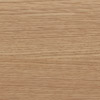All Blogs, Priming and Protecting, Varnish and Wood Oils, Weatherproofing
Caring for Exterior Wood: Part 2, Windows and Doors
Caring for exterior wood windows and doors forms part 2 in our series of our guides on looking after your exterior wood; part 1 on Wood Fences is here. Wooden window frames and doors can look fabulous and are arguably a greener option than many alternatives. When exposed to the elements (water, UV rays and grime) however, the “natural nature” of wood means that even previously treated and painted wood can be susceptible to rot, mould and warping. From an aesthetic viewpoint, wood also has other issues, such as flaking, bleeding through of knots, uneven weathering, silvering and stains from metal fixings which can all be treated and prevented.

All wooden windows and doors in environments like ours here in the UK, need protection, which can come in many forms including varnish, paint and oil. Some simple care and attention will protect and extend the lifespan of wooden windows and doors. We hope our tips below will help.
Removing old paint build up
If windows or doors are showing signs of rot, or have built up too many layers of paint over the years, then removing the paint is likely to be a necessity. Use a heat/hot air paint stripping gun or a good quality paint stripper, see our range here. Take care with a hot air stripper gun if the wood seems to have severe rot (see below for how to check), the heat/flame from the gun may catch dry wood or soft furnishings inside the property.
How to check for signs of rot on windows and doors
First inspect areas where water is likely to ‘pool’ such as sills and horizontal frame sections or mouldings. Then move on to joints and end grains where driving rain may have penetrated. Signs of rot may be visible in terms of discolouration or flaking, sometimes a strange smell or a hollow sound when tapped but the easiest way to identify rot is by touch. Wood that’s starting to rot will be softer, test by gently prodding with a finger or an implement that’s not too sharp. If the rot is extensive, get an expert to take a look as you may need to consider replacement or professional treatment.
How to treat small patches of rot
If rot is confined to small patches, you should be able to remove and treat them.
- Gently scrape out the rot with sharp implement such as a screwdriver and then apply a suitable wood rot treatment (Wood Coatings Category)
- Allow to dry
- Fill the hole with a good quality wood filler such as Ronseal High Performance Wood Filler
- Gently sand any rough areas of the door or windows then clean thoroughly to remove grease and grime
- Apply a suitable protective primer such as an aluminium wood primer before painting
Choosing a coating:

Decide what kind of finish you want from your doors and windows. If they’re previously painted and you don’t want to remove the old paint, you will be restricted to re-painting with a suitable paint (more below). If you’ve stripped back to bare wood you might want to consider wood oil, staining and/or varnishing. Whether you do this will depend firstly on the type of wood…oak and pine and secondly on the state it’s in. If you’ve removed rot, or repaired cracks, even if you’ve achieved a smooth finish, there may be significant areas where this detracts from the wood’s natural beauty. In that case a paint finish might be your preferred choice. Here are some of the coatings to choose from with some of the pros and cons.
Is wood oil suitable for exterior doors and windows
Oil might not be your first thought when choosing a finish for an external doors or for the outsides of your window frames. Often, laborious to apply and needing frequent re-application, it’s only a choice worth considering if wood is high quality and looks great. Wood oils are not suitable for wood which has been previously sealed. A vast range of wood oils is available on the market today and their suitability will depend on wood type and the environmental factors. Our blog on wood oils might help you choose and contains handy application tips.
Wood varnish on exterior woodwork

A clear varnish will give a protective coating while still showing the natural grain of the wood. Again, this is only really an option if wood looks in good shape and can be sanded smooth. Most varnishes can be used over wood preservers and protectors and if a different shade is needed, a varnish based stain can be used. Choose a varnish which is described as suitable for exterior use on hardwood and softwood. We recommend solvent based varnish for best protection outdoors. Look for an exterior or marine varnish which is flexible, protects against moisture and resists cracking/blistering; our yacht varnish is a highly popular choice with customers for windows and doors.
Painting wooden windows and doors

Paint is a good option if you want a solid block of colour whether that’s high gloss, matt or mid-way, sophisticated satin. Good quality paint, like varnish, will protect the wood against the damaging effects of moisture whilst also hiding blemishes. In fact, a new paint job can transform a property; many of our customers have updated windows and doors on business premises and domestic residences with modern anthracite grey. Check out our blog on how this contemporary colour is being used.
Freshening up with a bright white can also work wonders aesthetically at the same time as providing the protection needed. Vibrant gloss colours look great on front doors. We can colour match all exterior wood paints to any colour on the RAL Classic or BS 381c and BS4800 charts.
When doors or windows have been stripped and sanded back to bare wood, always use a primer before applying your topcoat – see our tips on primers here.

